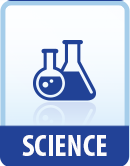|
This section contains 322 words (approx. 2 pages at 300 words per page) |
World of Scientific Discovery on Keiichi Itakura
Keiichi Itakura was the first to use a bacterial cell to synthesize the mammalian hormone somatostatin, a polypeptide produced by the brain's hypothalamus. Somatostatin inhibits secretion of growth hormone (somatotropin), insulin, and glucagon, and is being studied for use in treating insulin-dependent diabetes and other diseases. He selected it because of its possible usefulness, its small size, and also because it was known to have low toxicity and was thus safe to work with.
Itakura was born in Tokyo, Japan, and received a B.S. in 1965 and a Ph.D. in 1970 from the Tokyo College of Pharmacy. After doing further research for the National Research Council of Canada and at the California Institute of Technology, in 1978 he joined the staff the City of Hope National Medical Center in California, where he is a senior research Biologist. He still performs research at Caltech and is also affiliated with Genentech, Inc., a company specializing in genetic engineering.
Itakura and his staff were able to synthesize the gene for somatostatin and have it expressed by transcribing into RNA and translating that RNA into a specifically-designed protein (sequence of amino acids). To begin the process, he took the known 14-amino acid sequence of somatostatin and assembled codons (three DNA bases) for each amino acid. Since several codons can express each amino acid, he selected those that where most likely to be expressed in the E. coli bacteria in which the synthesis took place. The gene was then fused to a gene in E. coli plasmid (circular DNA found in some bacteria). There, it was expressed as if it were a native E. coli gene, producing a precursor form of the hormone. Itakura then removed this and chemically converted it to the active form.
He used radioimmunoassay techniques to show that bacteria had produced the mammalian somatostatin. He also demonstrated that it was able to inhibit the release of growth hormone from rat pituitary cells.
|
This section contains 322 words (approx. 2 pages at 300 words per page) |


